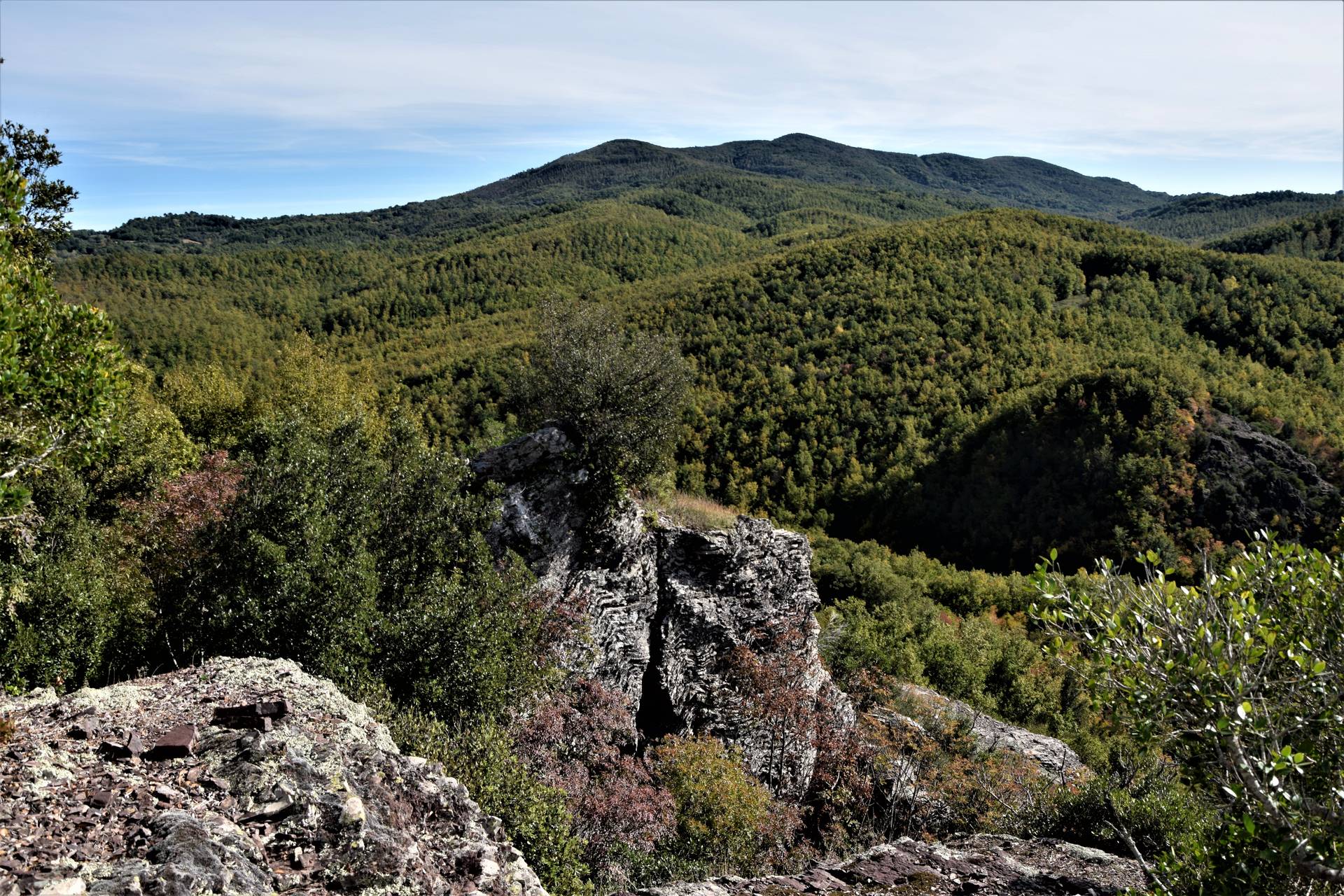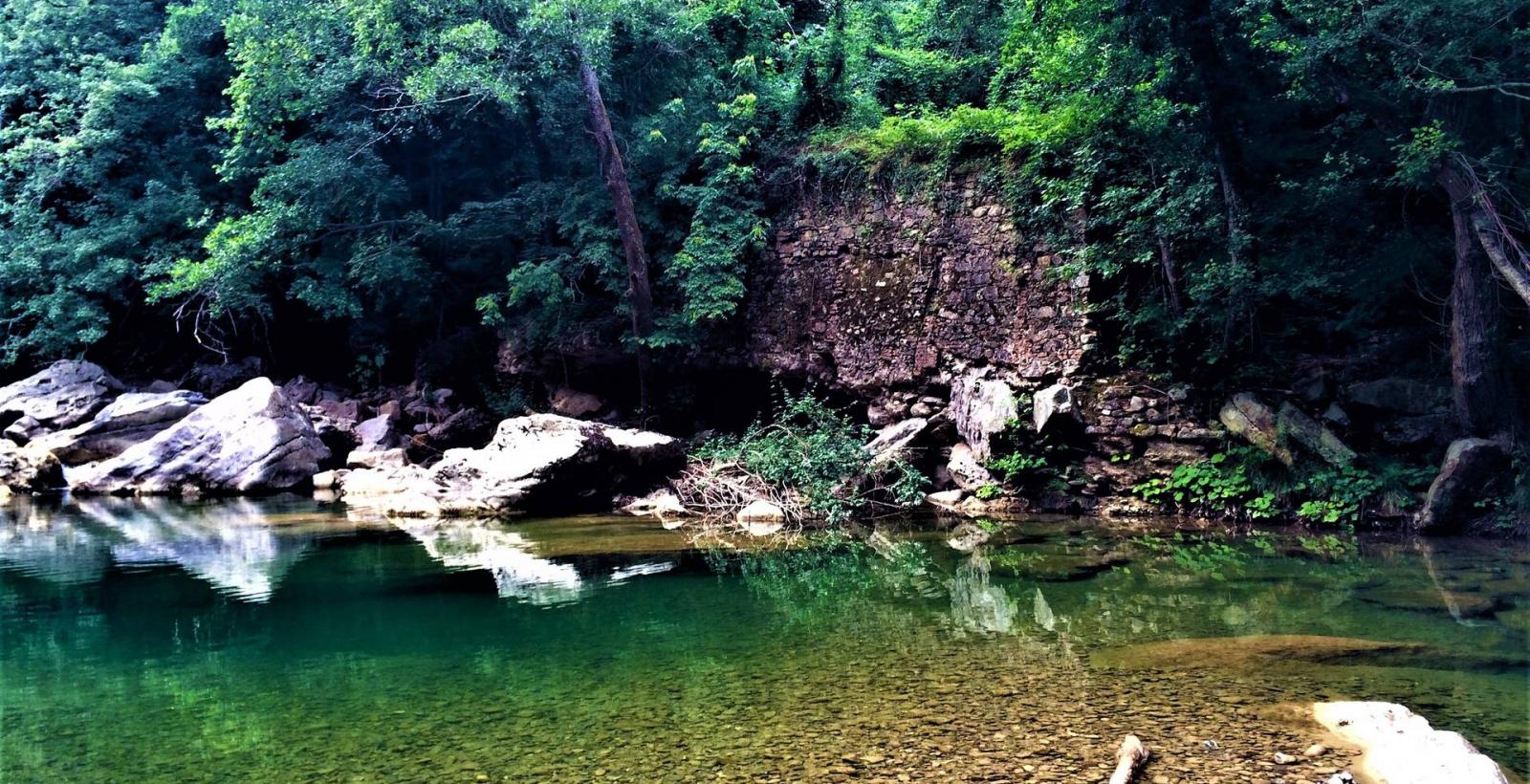
The Farma Nature Reserve, located between Monticiano and Roccastrada, includes the middle section of the beautiful and wild valley in which the Farma stream flows, the main tributary of the Merse river, and the Corso del Lanzo, a long stream that flows into the Ombrone at full height. from Paganico. The Sienese portion of the Reserve is limited to the left bank of the Farma stream, whose route marks the border between the provinces of Siena and Grosseto. The whole protected area, in the Grosseto area, is located in the Belagaio State Nature Reserve; here, on the Farma-Lanzo watershed, there is Belagaio, an ancient feudal castle, now a farm of the State Forestry Corps. To those who travel along the Siena-Grosseto road, at the Petriolo viaduct, the Val di Farma presents itself in all its harshness, with the steep slopes completely covered by the cover that delimit a narrow V-shaped valley floor, where you can see a treat the waters of the stream. The whole Val di Farma, and in particular the section included in the Reserve, preserves unique natural aspects for the province of Siena and among the most interesting of the entire Italian peninsula, with the presence of a particular attention and rare and endemic animal species, which here is an environment still wild and not disturbed by human activities. Val di Farma is in fact practically free of human settlements, except for the small villages of Iesa, Solaia, Scalvaia and Torniella, while it was more populated in the past, as well as more developed were the communication routes along the valley, now disappeared or reduced to paths surrounded by protection. In addition to a few finds of objects from the Upper Palaeolithic (20-10,000 years ago) on some alluvial terraces of the Farma, there are numerous historical evidences dating back to the Middle Ages, an era to which the buildings of the mills belong but above all the ironworks, real "factories" "for the working of iron which exploited, like mills, the energy of water. If in fact the stretch of the Merse in the surroundings of Brenna has become a point of reference for the city of Siena for the grinding of cereals, Farma has become a real "industrial center" for iron processing, an activity towards which the inhabitants of the place, penalized by the scarcity of agricultural land, turned very early, taking advantage of the vastness of their woods, useful for the production of the coal necessary for the roasting of the mineral and the subsequent processing of the metal. Roccastrada: Castello del Belagaio In addition to an ironworks the whole height of Torniella, the other buildings which, starting from the 14th century were organized on the Farma, all fall into the river stretch included or temporarily adjacent to the Reserve; under the Belagaio Castle, an ironworks was built by the owners of the castle, the Lottorenghi, while another of these buildings is located near the ruins of Castiglione sul Farma, owned by the Ardengheschi counts. Of these buildings, abandoned connected in the '600 and' 400, some ruins and many processing slags remain on the ground. The most important ironworks was the one called "Ruota" (today "Ferriera"), located on a flood plain of Farma, just outside the western border of the Reserve. Of this it is still visible inside the building, a few hundred meters upstream, also the barrier on the stream for the collection of water. Its intense activity, testified by the surrounding slag carpet, stopped by itself between the 19th and 20th centuries.
https://www.tuscany-charming.it/it/itinerari/riservanaturalefarma.asp
"I will die with the homesickness of these places, and if my soul remains, i pray that she will wrap with the wind that by boulders of Amiata goes along the Fiora melancholy to the sea".





FIND US ON AND
AND 